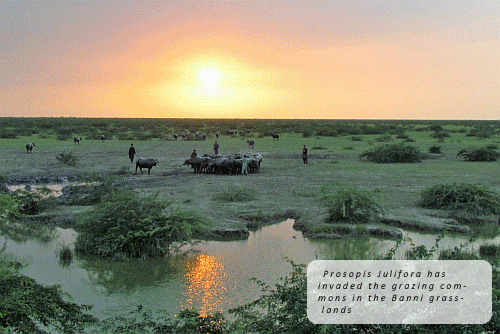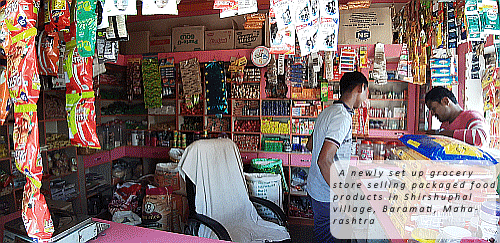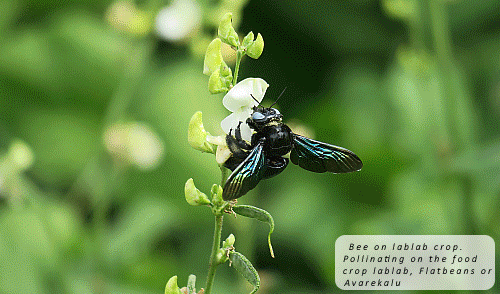The environmental pollution costs of increased poultry consumption
The purpose of the project is to determine if changing agricultural practices and depleting groundwater levels are in turn causing a chain reaction that increases the risk of ground water contamination as well as deleterious impacts on human health and sustainability of food production systems. |
 |
Water-Energy-Food nexus: Impact of hydro-power on food production and nutrition in the Western Himalayas
The purpose of the project is to analyse the cross-cutting linkages and trade-offs between clean energy projects (SDG 7), food security (SDG 2) and health, using the water-energy-food nexus approach and to inform policy to meet SDG7 and SDG2. |
 |
An introduced tree in the Banni: Invading landscape, livelihoods and lifestylesAn outcome of the spread of Prosopis juliflora, an invasive tree, in the Banni grasslands of Western India, has been the rise of charcoal-making from Prosopis. Not only non-pastoralists, but also pastoralists, have adapted to this novel livelihood. An unforeseen outcome of this is that the supplementary income that charcoal provides to pastoralists has led to increased herd sizes, despite the reduction in grassland area due to the Prosopis spread. Our focus in this project is to investigate the impact of this increased market integration and incomes on food security and nutrition (milk for consumption vs. milk for markets), i.e., the potentially paradoxical outcome of increased dairy production at the macro level potentially leading to reduced dairy consumption (and reduced nutrition) at the micro level. |
 |
Impact of urbanisation on gendered access to nutrition.The purpose of this project is to explore the impacts of urbanization on diets. For this study, we are examining changing diets in households across various socio-economic groups in rural, peri-urban and urban areas of selected sites in Baramati, Maharashtra and East Sikkim, Sikkim. Through this study, the role of exogenous factors (exposure to media, changes in markets, ease of access to packaged foods, etc.) associated with urbanizing spaces, as well as that of various extreme environmental phenomena (weather events like droughts, floods, etc.) in determining changes in diets and associated food provisioning burden on women is being explored. This study will use qualitative methods such as in-depth interviews, food diaries, daily activities diaries, and open-ended interviews with households and shop owners in both the study sites. |
 |
Impact of changing agricultural practices on food systems in Sikkim
The purpose of the project is to understand the drivers of change in food systems and diet and their impacts on the communities in Sikkim Himalaya (Dzongu, in North Sikkim) and provide policy inputs to various sectors of the Government of Sikkim. |
 |
Dietary patterns and pollinator dependence along the rural-urban gradient of BangaloreThe purpose of the project is to understand the effect of rapid urbanization on dietary changes in the communities and the shift in the level of pollinator dependent crops and its implication on nutrition. The study will explore how the food choice is influenced by varying levels of education, exposure, awareness and traditional knowledge and its impact consumption patterns across a range of socio-economic variables. |
 |